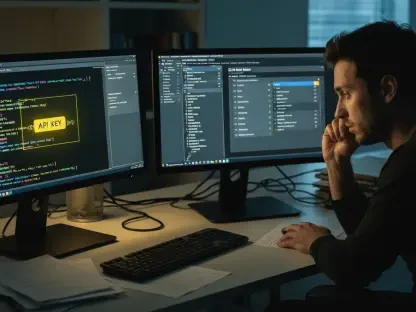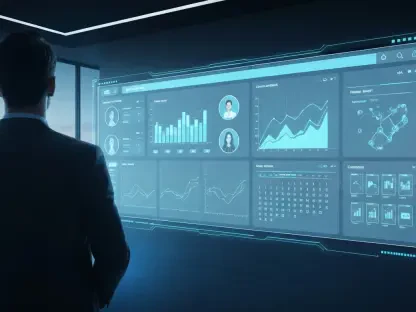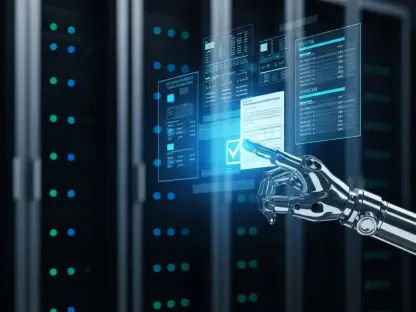The rapid evolution of technology has brought the necessity of integrating security deeper into the heart of software development processes. This progression, marked by the integration of security with DevOps practices—commonly known as DevSecOps—reflects a significant transformation in how organizations safeguard their digital assets and data. In recent years, the shift towards embedding security, often referred to as “shifting left,” has gained momentum as developers increasingly bear responsibility for implementing robust security measures. This paradigm shift underlines a fundamental change: security is no longer an afterthought handled solely by IT security teams but a core component integrated seamlessly into development workflows. As tech ecosystems grow more complex, organizations strive to achieve DevSecOps maturity by ensuring security considerations are woven into every stage of the software lifecycle, from initial design through to deployment, without compromising the speed and agility essential to DevOps.
Integrating Security Tools in DevOps
One of the most impactful advancements within this integration is the incorporation of security tools into the developer’s toolkit. This approach allows security measures to be viewed as enablers rather than obstacles to development, facilitating the early introduction of security considerations in the software lifecycle. For instance, modern developer environments are now often equipped with security plugins and APIs that automatically analyze code for vulnerabilities as developers write it. These tools enable continuous monitoring and instant feedback, significantly reducing the time and effort spent detecting and resolving security issues in later stages of development. Despite these benefits, the journey toward full DevSecOps maturity presents ongoing challenges. Organizations frequently struggle with aligning security and development priorities due to distinct objectives and cultural differences. Thus, fostering a shared vision remains crucial, requiring security measures to enhance rather than hinder DevOps pipelines.
Achieving the ideal blend of security and development practices necessitates a strategic focus on culture and mindset. True DevSecOps goes beyond mere technical integration; it requires organizations to cultivate a culture of shared responsibility and mutual trust among development and security teams. Pursuing this alignment involves reshaping governance, focusing on cohesive strategies that prioritize collective success over individual departmental goals. While some progress has been made, many organizations remain in transitional stages, striving to embed security practices that seamlessly complement their existing workflows. Moreover, the effectiveness of this integration often hinges on how well organizations manage the balance between development speed and security rigor, requiring meticulous governance and clearly defined success metrics.
Balancing Speed and Security
The ongoing expansion of intricate software architectures demands a reevaluation of how development speed and security are balanced. In today’s dynamic environment, enterprises manage extensive codebases and utilize sophisticated software development tools that accelerate coding processes yet simultaneously elevate security vulnerabilities. The sheer volume of code produced necessitates meticulous scanning and analysis to quickly isolate and rectify potential security risks. Pioneering organizations, exemplified by entities like Checkmarx, routinely scrutinize billions of code lines monthly, underlining the scale of this endeavor. Furthermore, the software supply chain’s rapid growth is evidenced by the introduction of numerous new components, such as NPM package versions, every month. Each addition represents both an advancement and a potential vulnerability, highlighting the critical need for a holistic approach to security within the software development lifecycle.
Amid this growing complexity, artificial intelligence (AI) tools are also transforming how code is generated and modified. These AI-driven innovations bring both opportunities and threats; while they augment development efficiency, they also expand the potential attack surface. The velocity with which developers must deliver secure, high-performance code has never been greater. However, organizations are increasingly under pressure to manage their development and operational response metrics, such as Mean Time to Recovery (MTTR), effectively. AppSec solutions are sought not just for security enhancement but for their ability to optimize these metrics too. As security tasks become a substantial part of development routines, organizations must ensure that security tools improve rather than impede development workflows, maintaining a fine balance between speed and precision.
Maturing to True DevSecOps
True DevSecOps maturity is characterized by a comprehensive integration that extends beyond technological solutions to encompass shared culture, governance, and aligned metrics. Contrary to mechanisms that make security merely tolerable for developers, mature DevSecOps establishes it as an intrinsic strategic priority. Only a minority of organizations have reached this stage, achieving profound synergy between security and development, where automation is not just possible but fully trusted and seamlessly integrated into workflows. Building this trust involves developing systems that both teams respect and rely on, requiring collaborative governance frameworks that articulate shared objectives and responsibilities. The transition from Stage 2 DevSecOps, focusing primarily on developer experience (DevEx), to Stage 3 maturity involves five key elements: aligning metrics, enhancing collaborative governance, advancing security education, fostering trusted automation, and balancing development velocity with security rigor.
Organizations realizing DevSecOps maturity have successfully adopted shared metrics that evaluate the effectiveness of collective undertakings rather than isolated task completions. Collaborative governance emerges as security and development teams jointly develop and enforce standards, creating a unified policy framework. Despite developers having access to security training and resources, the approach evolves, prioritizing just-in-time learning that fits seamlessly into coding environments. Automation, central to DevSecOps, gains traction as it becomes trusted and accepted by both security and development teams, having overcome initial reticence and trust gaps. Furthermore, in these mature environments, velocity-security balance ensures that code scanning is rapid yet thorough, with remediation processes integrated into uninterrupted workflows, facilitating prompt resolution of identified vulnerabilities.
The Path Forward for Organizations
The leadership within organizations plays a vital role in driving the progression towards DevSecOps maturity. Security leaders are called upon to champion collaboration over control, cultivating an environment where teamwork and mutual understanding are prioritized. Engineering leaders must perceive security not as a legislative hindrance but as an essential component that facilitates sustained development speed. Executive involvement is pivotal, encouraging investments in robust security practices that emphasize the long-term vitality of both codebases and teams. Rather than perceiving cost as compliance overhead, leaders are urged to frame security investment as a strategic enabler of competitive advantage and innovation. By supporting this transformation, leaders will accelerate the maturity journey, optimizing resources and maximizing business outcomes amid rising security incidents and digital challenges.
The depiction of organizations as predominantly in mid-transition stages offers insights into the landscape’s realities. Such a scenario is less about indicating failure and more about highlighting opportunities to excel. Organizations investing in DevSecOps will find themselves advancing closer to delivering secure and high-performing software with minimal disruption, thus strengthening their competitive position. This transition requires persistent efforts, focusing on fostering trust and passing security into development teams. By achieving seamless security integration, companies will position themselves at the forefront of secure software development, minimizing friction and capitalizing on reduced operating costs. As organizations look ahead, the focus should remain on refining their practices to ensure that security measures are inherently integrated, enabling secure software delivery without sacrificing development speed or quality.
Conclusions and Future Considerations
The swift advancement of technology has made it essential to weave security deeply into software development processes. This evolution is epitomized by the fusion of security with DevOps, known as DevSecOps, highlighting a transformative shift in how organizations protect their digital assets and data. In recent years, the push to integrate security early in the development process, a practice known as “shifting left,” has accelerated. Developers now play a critical role in establishing strong security measures, illustrating a fundamental shift from having IT security teams solely responsible for these tasks. Security is no longer an afterthought but a crucial element of the development workflow itself. As tech ecosystems become more complex, achieving DevSecOps maturity is a priority for organizations. They aim to integrate security seamlessly into every phase of the software lifecycle, from initial design to deployment, ensuring that this does not impede the speed and agility so vital to DevOps practices.









